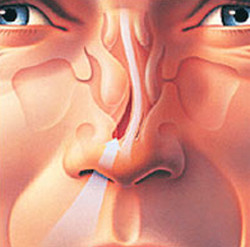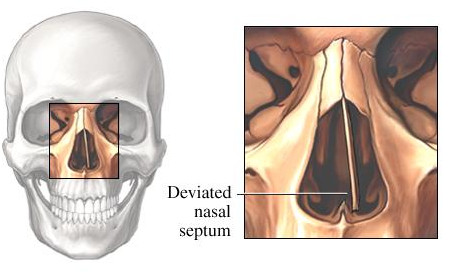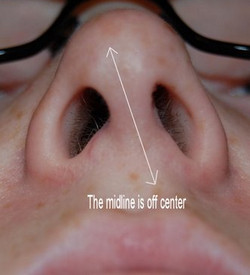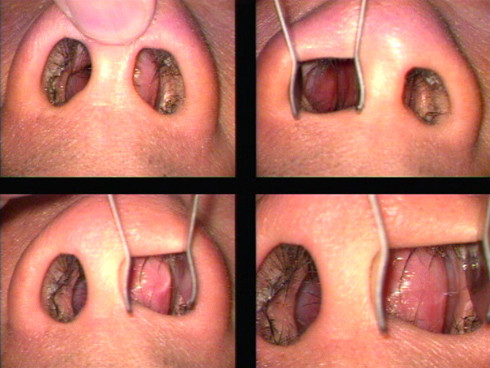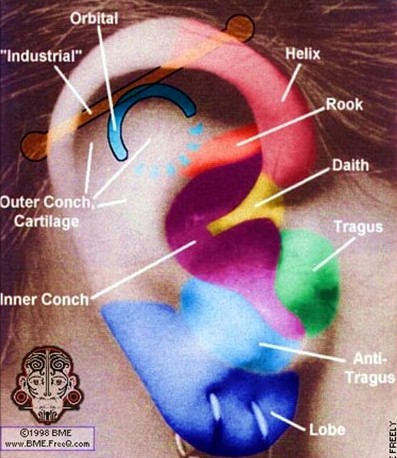What is a Deviated Nasal Septum?
The nasal septum is the bone and cartilage that divides the nasal cavities into two separate chambers. It is normally located at the midline, which makes the nostrils symmetrical. Deviated nasal septum is the improper alignment or displacement of the septum either to the left or right. Slight deviation does not cause any problems and does not necessitate treatment. There is an estimate that 80% of the population have a deviated nasal septum. Most of them are going on with their lives without experiencing any inconveniences. It is only when there is too much deviation that certain health risks are involved. [1]
Deviated Nasal Septum Symptoms
A severe deviated nasal septum can obstruct one section of the nose and lessens the flow of air into that cavity. This would result to the most common symptoms of a deviated septum:
- shortness of breath,
- frequent nosebleeds,
- nasal congestion,
- headaches,
- facial pain,
- recurring postnasal drip and
- recurrent sinus infections that would lead to sinusitis.[4]
- Young children and infants with severe septum deviation may have noisy breathing while asleep.
Individuals with mild deviation would manifests symptoms of a deviated septum only when they are experiencing upper respiratory tract infections (common cold). The infection would cause inflammation of the nasal passages and briefly amplify minor airflow obstructions.
Deviated nasal septum snoring
Snoring is one of the most frequent consequences of a deviated septum. This is true because the obstruction of the nasal airflow causes individuals to breath through the mouth. When asleep, the body muscles relax, including the tongue, soft palate, uvula and the throat. During respiration, the air movement causes these parts to vibrate resulting in loud noises or snoring.
Deviated nasal septum sleep apnea
Snoring, when is untreated and ignored for long, it can lead to one of the more serious symptoms of a deviated septum – sleep apnea. [5] This is a chronic condition where an individual recurrently stops breathing for at least ten seconds during sleep. When this problem occurs thirty times or more in a 7-hour sleep period, it is considered as obstructive sleep apnea. Such frequent pauses can lead to mild to severe hypoxemia and lead to ischemic heart disease or other cardiovascular and cerebrovascular problems that may be fatal.
Deviated Nasal Septum Causes
A deviated septum can develop because of congenital malformation or a traumatic birth. Most often it is due to postnatal trauma such as a direct blunt blow to the nose. That results in a fracture in thin bones in the nose. Anything that can cause trauma to the nose can lead to septal deviation. This happens most often during automobile accidents, rough play or playing any contact sports, or even shoveling snow with equipment that is too large for the child.
A deviated septum may also be connected to Marfan syndrome [6] and Ehlers Danlos Syndrome [7]. Both of these are congenital connective tissue tissue disorders.
Deviated Nasal Septum Pictures
Picture 1 : Deviated nasal septum
Picture 2 : : Image of Bony nasal septum deviation
Picture 3 : Deviated nasal septum midline
Picture 4 : Deviated Nasal Septum Diagnosis
Deviated Nasal Septum Treatment
There are no known medications that can correct a deviated septum. Repair is based upon surgically correcting it. Medical treatment is provided for managing symptoms of nasal congestion or post nasal drips.
The physicians would generally prescribe decongestants, antihistamines and nasal sprays to relieve these symptoms. In extreme pain caused by the inflammation of the sinuses, mild pain relievers may be given.
To prevent future complications and relieve the patient from recurring symptoms, permanent deviated septum repair is considered. That means surgery.

